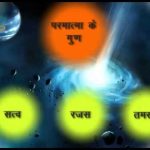Stonehenge Aoteroa
Stonehenge Aotearoa is unique in New Zealand and internationally as a place of science and wonder. Built by members of The Phoenix Astronomical Society with the support of the Royal Society of New Zealand the purpose of Stonehenge Aotearoa is to encourage people of all ages to rediscover the knowledge of their ancestors.
The Henge is a window into the past. Stone circles played an important part in the history of almost everyone. The stones are neutral and welcome people of all cultures, beliefs, faiths and religions.
The vision for Stonehenge Aotearoa was to create a practical open-sky observatory inspired by, and built on a similar scale to, the famous Stonehenge in England. However, it is not a replica of this mysterious ancient monument but a modern interpretation, based upon the many stone circles and astronomical stone structures scattered around the globe.
Stonehenge Aotearoa is designed specifically for its location in the Wairarapa region of New Zealand’s North Island.
It combines modern scientific knowledge with ancient Egyptian, Babylonian, Celtic, Polynesian and Maori starlore. It is used to teach maramataka (the calendars of time and seasons). The stones also form a Polynesian star compass and can be used to teach navigation.
Stonehenge Aotearoa consists of 24 upright pillars, connected by lintels to form a circular structure 30 metres in diameter and approximately 4 metres high. This structure is similar in design and size to the circle of sarsen stones at Stonehenge on Salisbury Plains, England.
Seen from the centre, the pillars and lintels form windows or doorways along the horizon. These frame the rising and setting points of bright stars that are either important seasonal markers or navigational beacons.
Large stone circles have special acoustic properties that focus and amplify sounds within the circle. In ancient times these acoustic properties were used to create special effects at ceremonies held within the circle. Stonehenge Aotearoa has these acoustic properties and forms a natural amphitheatre.
Leave A Reply
You must be logged in to post a comment.









 Paranormal
Paranormal

